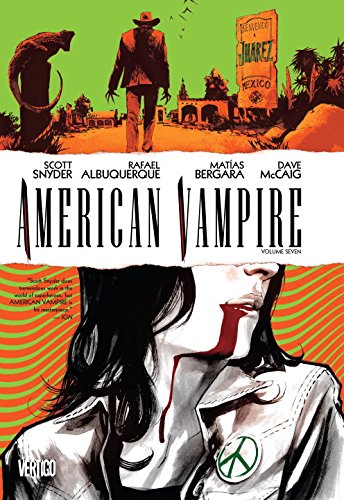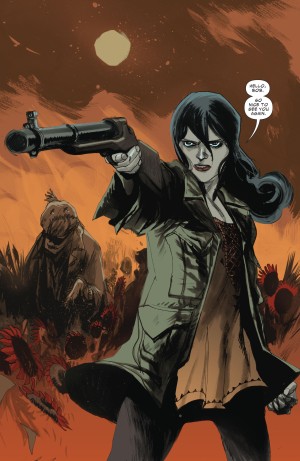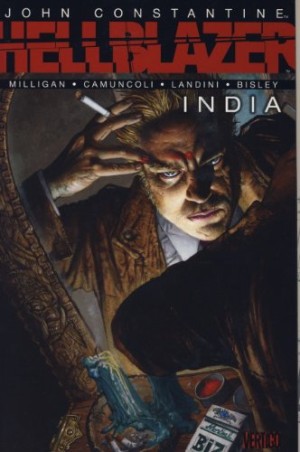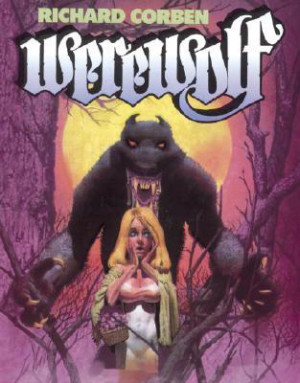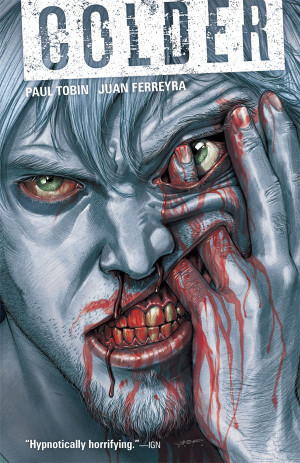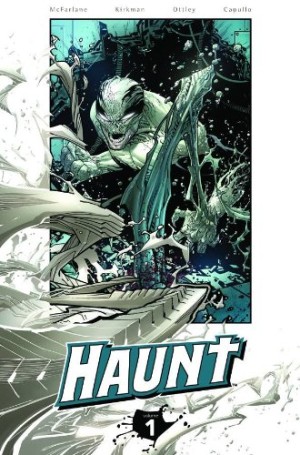Review by Frank Plowright
When we last saw Pearl Jones in volume five she’d survived to the 1950s and found a measure of happiness and contentment. That didn’t last until the end of the book, which she survived. Just.
Volume seven opens in 1965. Pearl has returned home to the family land in Kansas that she left forty years previously to seek her fortune in Hollywood. She’s masquerading as her daughter, claiming to be called Henrietta, and takes in runaway children, which doesn’t sit well with the remainder of the community. As this is American Vampire, these are no ordinary children, and despite her care, life isn’t easy.
Being the daddy of all American vampires, Skinner Sweet is still active, still without conscience, and still beyond paying for his deeds. As unrecalcitrant villains go, they don’t come much better than Sweet. He revels in what he is, has little but contempt for others, and prioritises his own needs at all times. In the opening chapter Scott Snyder even provides a very cool hideout for him, dating back to the 1880s.
Not that it matters now, but there’d been a considerable gap in publication between graphic novels, and there’s a deliberate attempt in this book to draw together all the threads introduced over the 20th century in the previous books. That’s not to say there’s no innovation or new threats. In fact the Grey Trader is the most viscerally terrifying character introduced in the series to date, expanding the repertoire of horrors beyond anything previously seen. Let’s put it this way: if Sweet is running scared, what does it imply for anyone else?
As ever, it’s with this type of material that Rafael Alburquerque is at his best. He relishes an opportunity to terrify, and as the ante is upped considerably he can frequently display his artistic strengths. Where Alburquerque’s not as good is in establishing the detail conveying the cast actually occupy a real world. He’s not one for anything but the most basic of backgrounds, and all too often the characters appear to be floating on a splodge of Dave McCaig’s colour within the panels.Dispensing entirely with panel borders for montages in places is an interesting technique. Guest artist Matias Bergara takes over for the final chapter, and he’s a revelation. His pages have the same looseness as Alburquerque, but with a greater sense of style and substance.
Bergara’s tale follows up on a thread mentioned in passing during the main story, that of a researcher for vampire hunters Vassals of the Morning Star, now more conveniently referred to as the VMS. He’s following information from a miner’s journal dating from the 1850s, pages of which are interspersed with the tale set a century later. We already know Bunting’s fate, and here discover the details.
By the conclusion of this graphic novel the main thrust of the series has been pointed in a new direction, and anyone who’s enjoyed the series to date will surely want to pick up volume eight.
